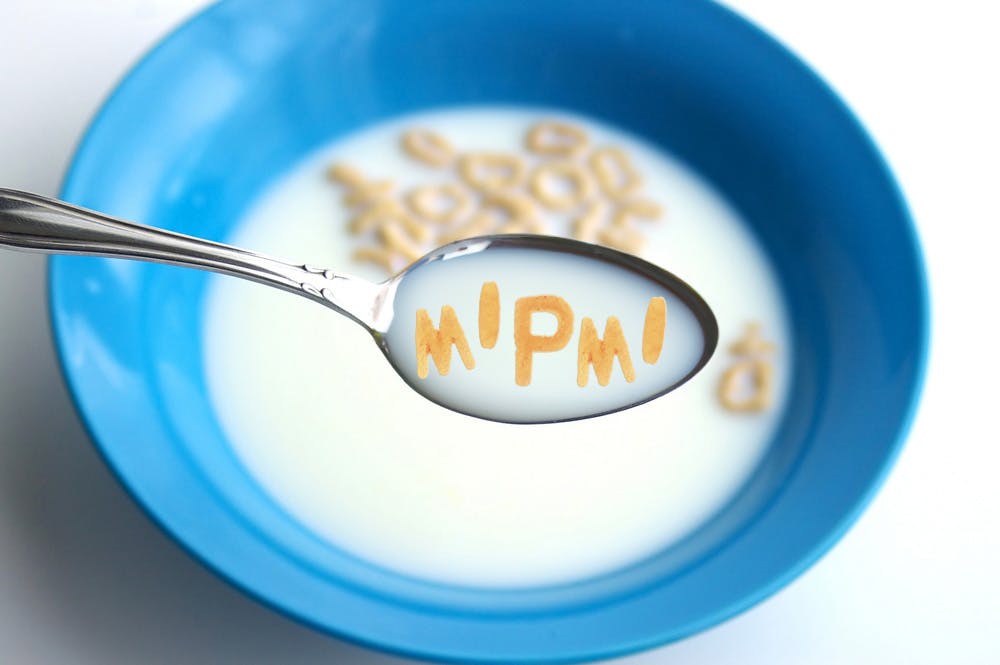Residential real estate – like most industries – enjoys the use of acronyms and abbreviations to get information across. That can make for challenging moments for consumers when attempting to track the home-buying and -selling process.
We have APR, CMA, CC&Rs and, of course, HOA – all commonly used terms to help “abbreviate” our conversations. Here are two more, perhaps lesser-known, terms worth noting – PMI and MIP. (Real estate terminologies.)
Let’s start with Mortgage Insurance Premiums. MIPs are required for all borrowers seeking a loan from the Federal Housing Administration (FHA). This fee is applied because FHA consumers tend to have more debt relative to their income. Roughly 30% of all U.S. borrowers who carry a loan with a guarantee or mortgage insurance pay MIP, according to Forbes.
FHA loans require a fee at closing – known as an upfront MIP (UFMIP) – and are 1.75% of the loan, an amount that can be built into the overall mortgage payment. That’s followed by a monthly insurance premium, currently between 0.15% and 0.75% of the loan balance and recalculated annually. A borrower’s loan-to-value ratio helps to determine the premium – not a person’s credit score.
FHA loans offer some of the lowest interest rates in the land and allow one of the smallest down payments (3.5% for qualified applicants). An FHA borrower could purchase a $500K home in King County with $17.5K down (excluding closing costs/fees).
The biggest downside is that MIP only goes away when the FHA loan is paid off. The exception is when borrowers put down at least 10% at the time of purchase; in that case, premiums tend to stop after 11 years depending on other factors (timeliness of payments and loan-to-value score). That’s different than the other abbreviation, PMI.
Private Mortgage Insurance applies to all home purchases that include conventional financing outside of FHA loans – or about 42% of all mortgages. Consumers do not pay PMI if they put down 20% or more at closing. Lenders require this monthly fee to help reduce their financial exposure should a borrower fail to repay the loan. In the event of foreclosure, an insurance company would cover part of the lender’s loss.
Mortgage insurance is calculated as a percentage of the loan. The lower the credit score and the smaller the down payment, the higher the lender’s risk and the more expensive insurance premiums will be. As the balance falls, PMI costs will also go down. (Here’s how to cancel PMI.)
Most mortgage insurance premiums range from 0.17% to 1.86% of the loan, or $170 to $1,860 for every $100,000 borrowed, on a fixed-rate, 30-year loan. That’s $35 to $372 per month on a $250,000 loan.
The insurance can also be paid upfront to reduce a borrower’s monthly balance. The seller or lender could pay some or all of it, too.
Some PMI policies, called “declining renewal,” allow premiums to decrease each year as equity in the home increases. Other PMI policies, called “constant renewal,” are based on the original loan amount and don’t change for the first 10 years.
Adjustable-rate-loan insurance can be pricier. For example, a PMI payment can go as high as 2.33%. That’s $2,330 for every $100,000 borrowed, or $485 a month on a $250,000 loan.
There’s one other, similar abbreviation: MPI, or Mortgage Protection Insurance. That’s a policy that typically pays off the balance of a mortgage – including interest – when the borrower dies, becomes disabled or, in some cases, is laid off from work. Policies don’t usually pay for HOA dues and homeowners insurance, though.
Navigating the world of mortgage insurance might seem like diving into a pool of alphabet cereal, but fear not! Armed with a bit of knowledge about MIPs and PMIs, you’re ready to tackle the twists and turns of the real estate market like a pro.




